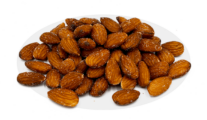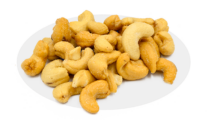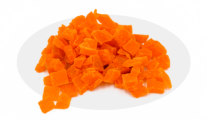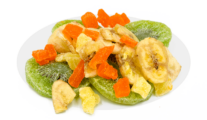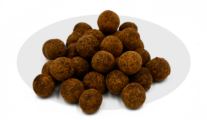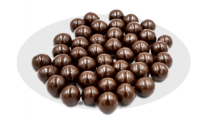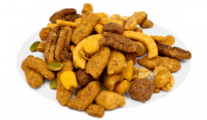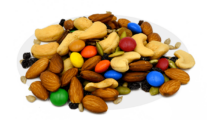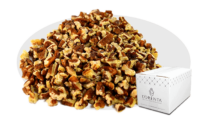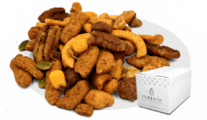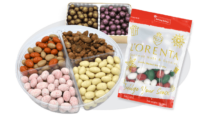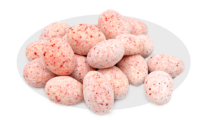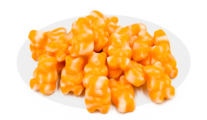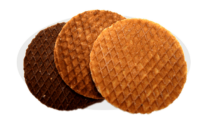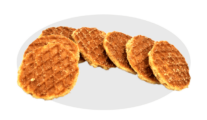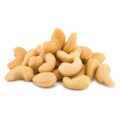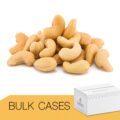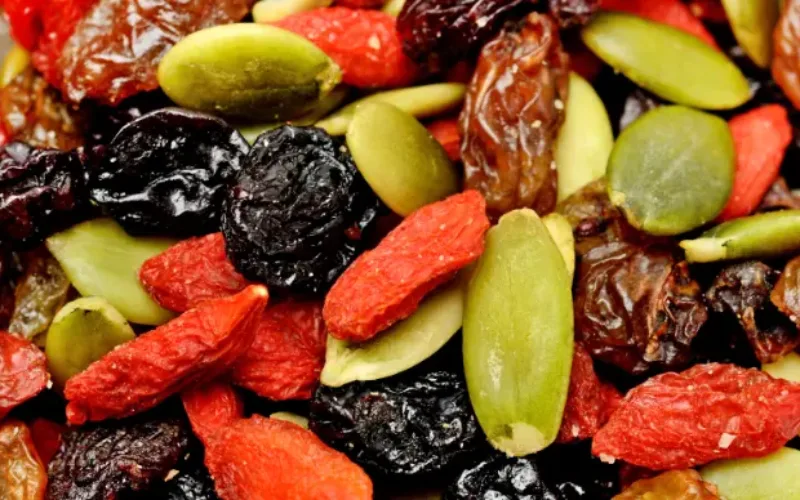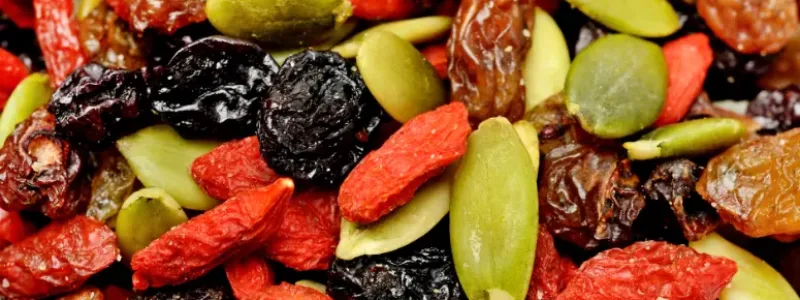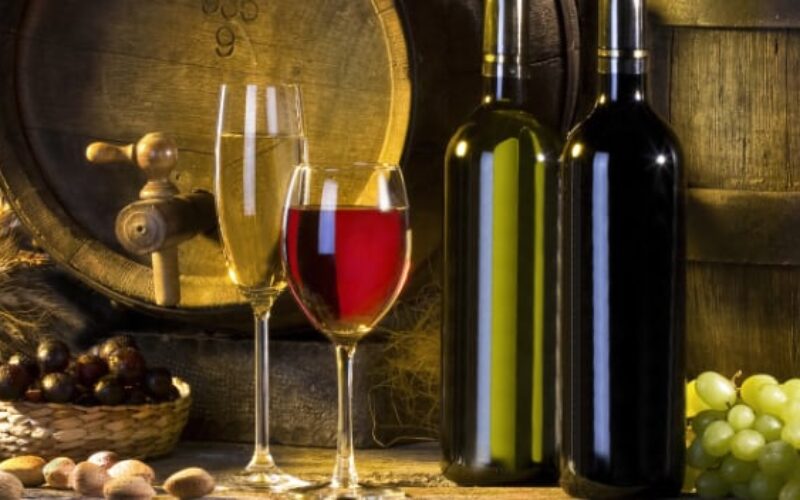Written By Sam Henselijn
Have you ever wondered: Where do cashews come from? You are not alone! The origin is so intriguing. Cashews are fruits from the cashew tree. Let’s explore more facts about cashews!
Where do Cashews Come From?
Cashews sprout like a tail from the bottom of the fruit and, in
their natural state, are very strange and could be poisonous. The answer to the question, “where do cashews come from?” is a bit tricky because they are produced commercially and harvested in different places. Most are produced for commercial purposes and come from Africa and India. However, the tree in itself is native to Brazil. The Botanical name is Anacardium Occidentale.
The tree produces a fleshy stalk called the cashew apple. It usually resembles a tiny pear. The stalk’s end is where the kidney-shaped nut grows.
A double-shell usually protects the nuts against hungry passersby. The double-shell contains a poison known as anacardic acid. Anacardic acid is an oily substance that is related to Urshiol. Urshiol is the toxic substance usually found in poison ivy.
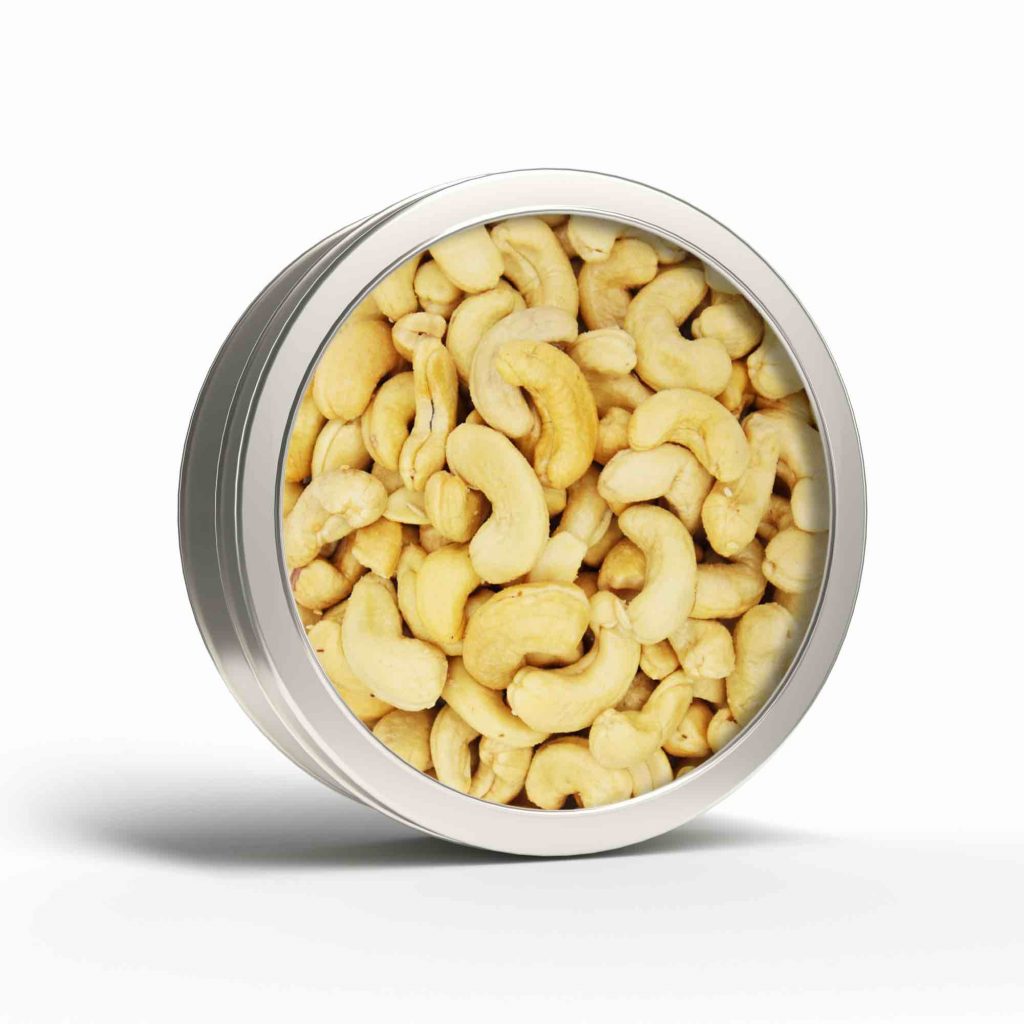
The urshiol is very harmful when consumed and will irritate and cause allergic rashes on the skin. Their corrosive coating is why they aren’t sold in their shells. This is different from how other nuts like peanuts and pistachios are sold. Instead of being sold with the shells, they are roasted. The roasting process removes the toxic oils, leaving the shell brittle and easy to remove.
Are Cashews Good for You?
When shopping, you’d often see them labeled as “raw.” However, they have been processed. The actual raw ones are not safe to eat due to their high level of toxicity. They are commonly referred to as tree nuts. And in the real sense, tree nuts are nutritionally compared to them. But, they are seeds. Cashews are very rich in nutrients. They also have many beneficial plant compounds that can be added to dishes.
These are also great for improving health. These oddly shaped fruits have often been linked to weight loss, blood sugar reduction, and a generally healthier heart. They are also very rich in nutrients. Some of the nutrients are listed below:
- Five grams of protein
- One hundred and fifty-seven grams of calories
- Twelve grams of fat
- One gram of fiber
- 67% of the daily value of copper
- 20% of the daily value of magnesium
- 20% of the daily value of manganese
- 15% of the daily value of zinc
- 13% of the daily value of phosphorus
- 11% of the daily value of Iron
- 10% of the daily value of Selenium
- 10% of the daily value of Thiamine
- 8% of the daily value of Vitamin K
- 7% of the daily value of Vitamin B6
They are rich in unsaturated fat, making them an excellent snack for weight control. Unsaturated fats are linked to a lower risk of premature death. Unsaturated fats also significantly lower heart disease. These juicy fruits are also low in sugar and provide an excellent source of fiber. Did you know that they also contain the same amount of protein you get in cooked meat? So, they can be an ideal replacement for meat if you opt for a vegan lifestyle.
Different Varieties Of Cashew
1. W-180
These are the largest, most delicious and most expensive. It is often referred to as the king of cashews. This is because of its size and how it remains fully intact when sold. We try to use this size as much as possible and where we can.
2. W-240
The W-240 is the third regarding grade and size. We use the W-240 because they are the standard size and are generally affordable for most people. They look great, are tasty and crunchy. Try our our roasted salted cashew and milk chocolate cashew. Click here to check out our premium wasabi soy cashew!
What is a Cashew Butt?
The cashew butt is the thicker part of the fruit. They have been cut from the whole cashew and aren’t usually as nutritional as the primary fruit. We do not use them to make our products because they don’t give the same nutrient value. Unlike other companies that use the butt to make the mix cheaper, we use only the main fruit. However, the butts are great when added as toppings to ice cream and yogurt.
FAQ Where do Cashews Come from
What part of the cashew tree do cashews come from?
Cashews grow from the bottom of the cashew apple, a fleshy stalk that resembles a tiny pear. The cashew nut itself is kidney-shaped and grows at the end of this stalk.
Why aren’t cashews sold in their shells?
Cashew shells contain anacardic acid, a toxic oily substance related to urshiol found in poison ivy, which can cause irritation and allergic rashes on the skin. Due to their corrosive coating, cashews are not sold in their shells but are instead roasted to remove the toxic oils, making the shell brittle and easy to remove.
Sam Henselijn Author’s Biography – Meet L’Orenta Nuts CEO
Copyright 2024 L’Orenta Nuts
L’Orenta Nuts proudly holds the SQF food safety certification, symbolizing our unwavering dedication to upholding the highest standards of food safety and quality. This certification guarantees that our products undergo rigorous scrutiny, ensuring transparency, traceability, and adherence to global food safety regulations for the utmost consumer confidence.
L’Orenta Nuts has the HACCP (Hazard Analysis and Critical Control Points) certification is a systematic approach to identifying, evaluating, and controlling food safety hazards. It ensures that food products are produced and handled in a manner that minimizes risks and complies with safety standards.
Our GMP (Good Manufacturing Practices) certification ensures that a manufacturing facility adheres to comprehensive quality and safety standards while producing pharmaceuticals, food, and other consumer goods, promoting consistency, quality, and compliance with regulatory requirements.
L’Orenta is an FDA-approved manufacturing facility and has met the rigorous standards set by the U.S. Food and Drug Administration. It demonstrates compliance with regulations, ensuring the production of safe and high-quality food products.


